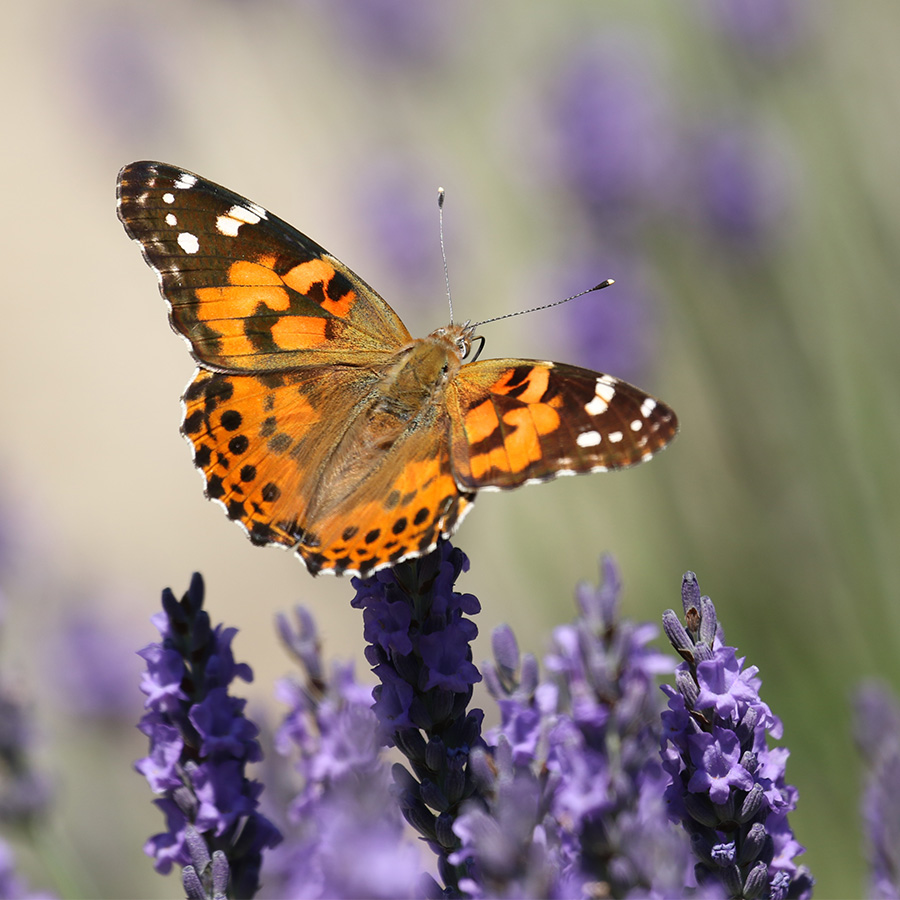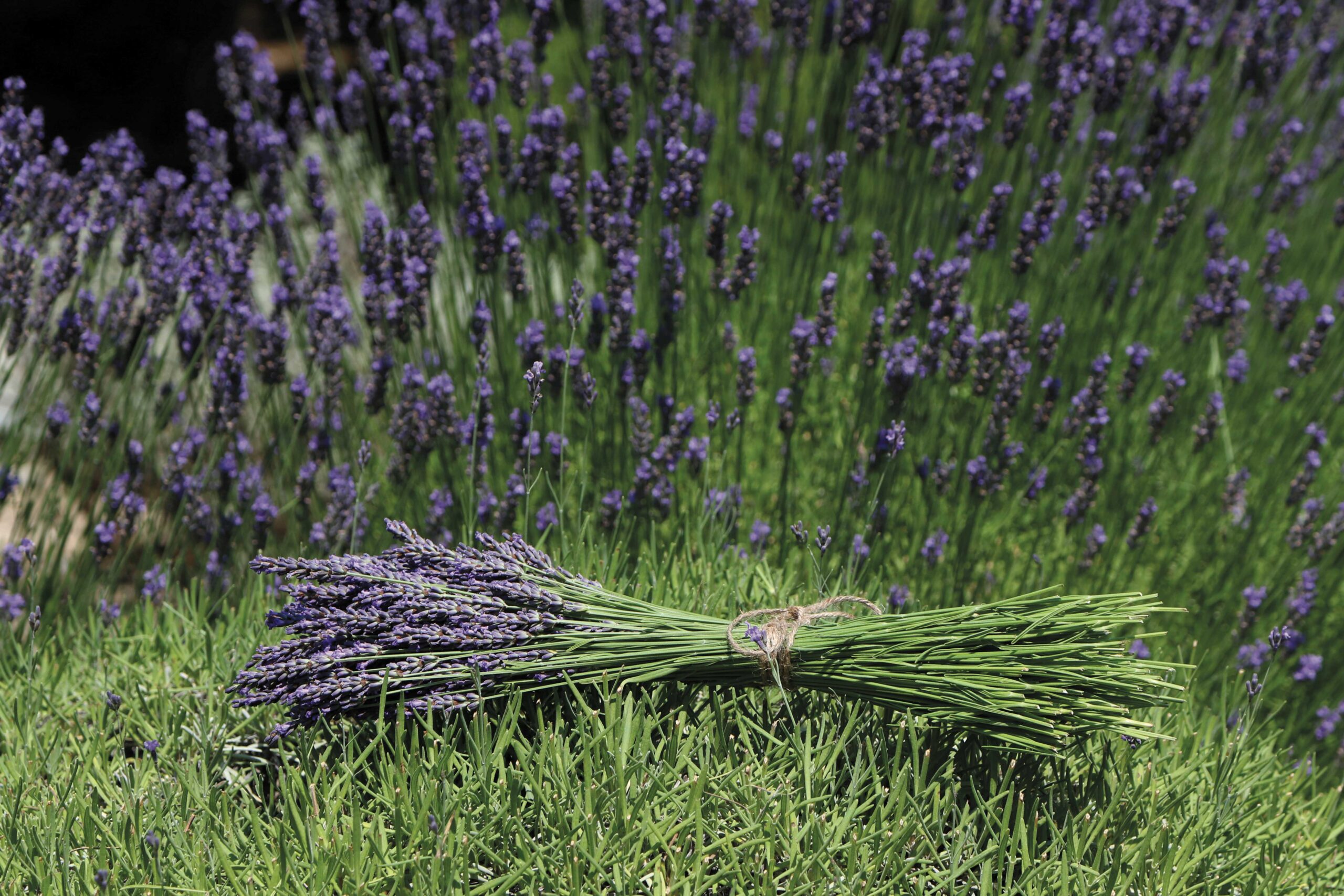The tree-lined secluded dirt road leading to Cape Cod Lavender Farm in Harwich transports visitors to a world of tranquility, natural beauty, and a simpler way of life.
Story by Lisa Leigh Connors
Photography by Marcy Ford
When Cynthia Sutphin started Cape Cod Lavender Farm in Harwich more than 25 years ago, she was told the fragrant perennial plants wouldn’t thrive on Cape Cod.
“But I tried it anyway, and as it turns out, lavender does quite well here,” says Sutphin, who researched the plant extensively with agriculture experts. “Many of my plants are 25 years old!”
Today more than ever, people are seeking items of comfort, products that soothe the soul and outdoor spaces that provide solitude, beauty, and nature—a quiet place to escape the hustle and bustle of daily life. The 11-acre farm, surrounded by 75 acres of conservation land with walking trails and wildlife, provides a moment of zen. A handmade fairy house on the property with treasures at its tiny doorstep inspires kids to run away with their imaginations. It’s a step back in time set in a charming, enchanted forest.
“As the world gets busier and busier, the need for nature becomes greater and greater,” says Sutphin. “The lavender farm offers that opportunity not only for parents, but for children who are growing up in the cities and suburbs and they don’t have the opportunity to explore the woods like we do. Coming here is very peaceful and healthy.”
“Unlike other places, it’s in the middle of a quasi-wilderness,” adds her husband, Matthew. “You’re all by yourself out here surrounded by nature and conservation land.”
Sitting inside the farm’s rustic and cottage-style gift shop, Sutphin says Matthew has always offered his support. He works behind the scenes and provides valuable aesthetics to the grounds and the shop, including recently adding insulation to one room that will serve as a year-round distribution area for the farm’s bustling mail-order business.
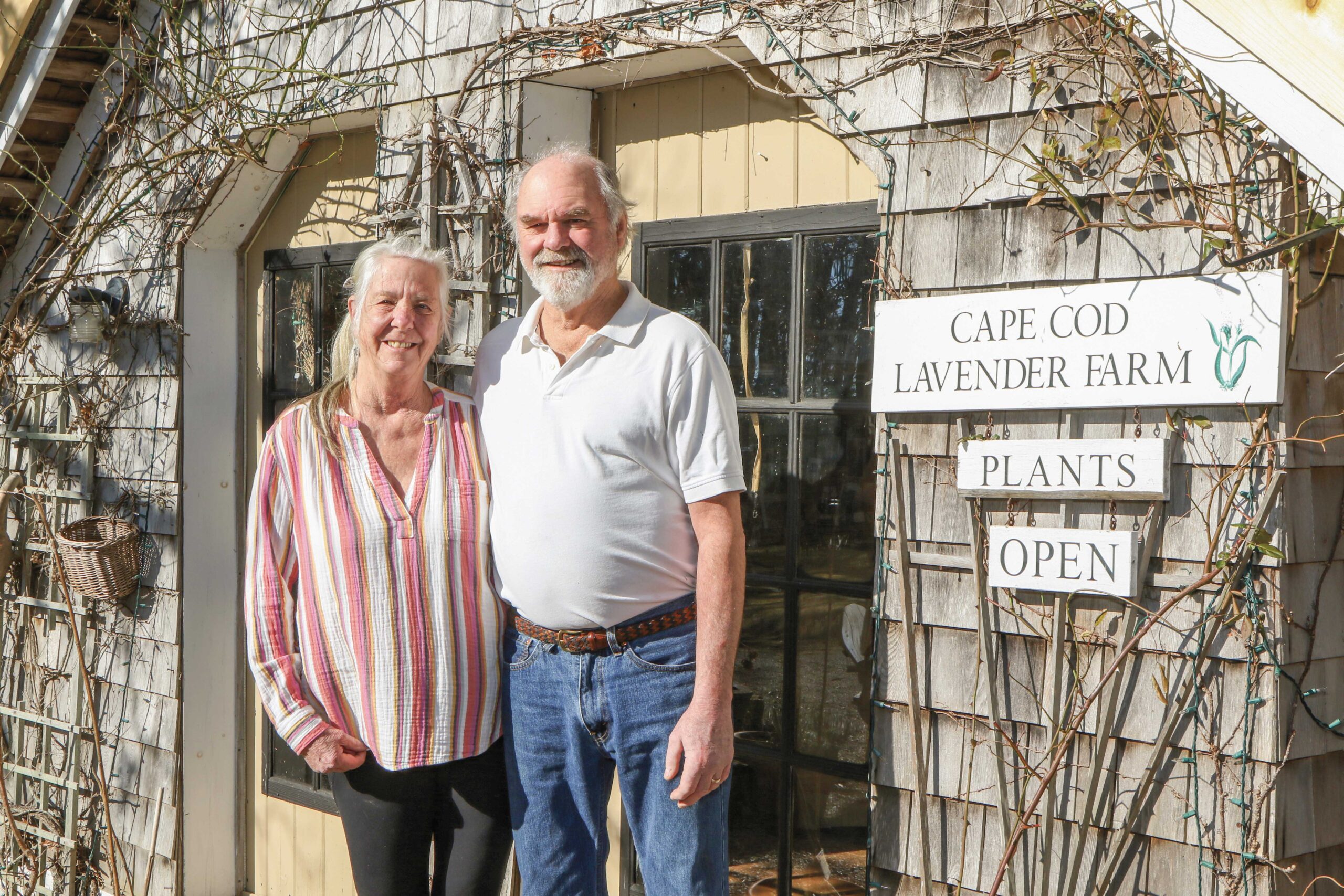
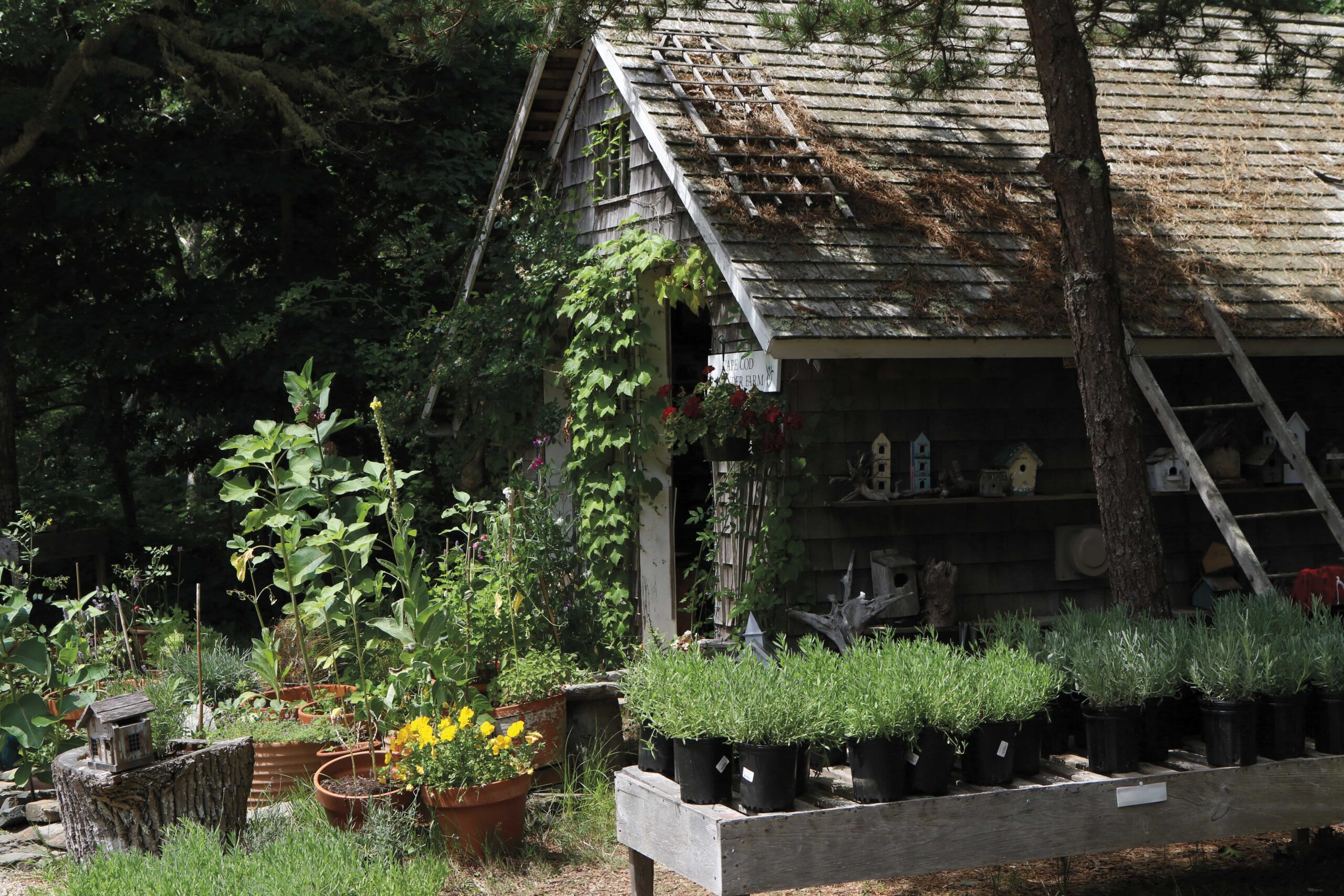
Lavender has been known for its medicinal qualities—it helps with insomnia, headaches, and helps calm the nerves. In addition to selling 6,000 plants annually and fresh bunches of lavender during harvest season in June and July, the farm sells more than two dozen products for the home, mind, and body such as lavender and sage body butter, neck pillows, soy candles, lavender soap, hand sanitizer, and roll-on essential oils made with lavender, geranium, and sage (roll on your wrists for mental balance). The farm’s apparel line features masks, gaiters, and hats as well as sweatshirts with the words “Keep Calm and Lavender On.”
The Sutphins are proud of their longtime local business partnerships, many of whom are referred to as “old friends.” Bethany Seasons continues to make their top-selling Lavender Lather Soap, the first product offered 25 years ago. Cape Cod Cranberry Harvest has stirred up marmalade magic for 20 years with its lavender-lemon marmalade, a top-selling culinary treat. Harwich Port-based Cape Sea Grille uses the fresh lavender to create homemade lavender limoncello every summer, and it’s also the base for their lavender lemon drop cocktail.
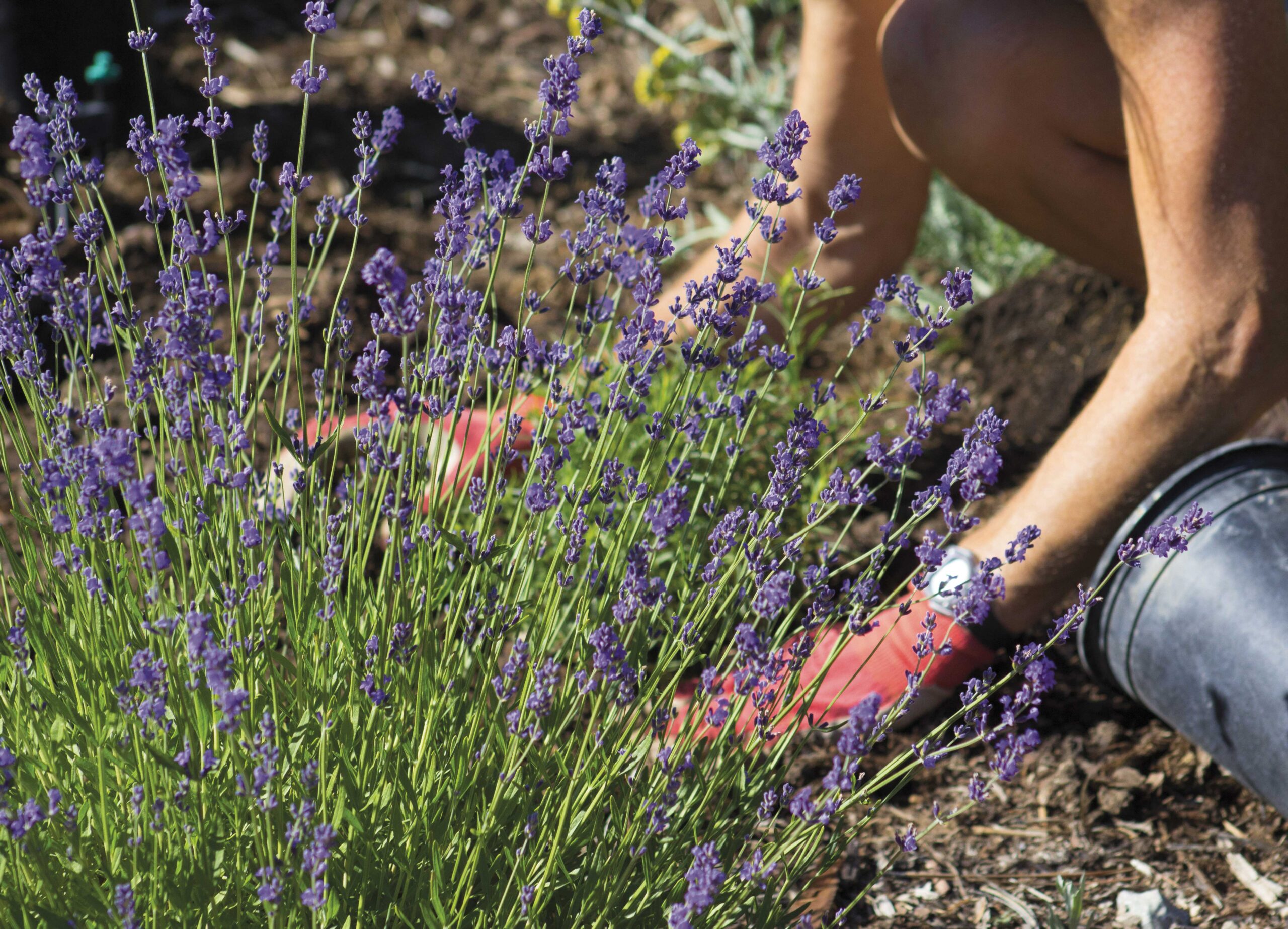
Sutphin says she doesn’t necessarily seek out business opportunities, but rather, they happen organically. Over the holiday season and for Valentine’s Day, Chatham-based Primabee (a company that sells CBD products) offered customers gift bags that included the farm’s natural lavender soy candle, lavender bath bombs infused with CBD, and a sachet of fresh lavender. Cape Cod Beer brewed a limited-edition Vanilla Lavender Porter last year and Chatham Candy Manor created chocolate-covered pretzels—hand-dipped and drizzled in lavender chocolate! In May, the farm is teaming up with Fly Boy’s Honey, two local beekeepers who will bring their own hives to the farm and also help maintain the lavender farm’s two hives. “The idea is to give the bees some nice lavender to get their nectar from and to have our own experience with the bees,” says Sutphin. They will also sell Fly Boy’s Honey at the shop.
One product Sutphin makes right on the farm is lavender hydrosol, a popular facial toner that comes from the steam distillation of the flowers. They harvest the lavender, then distill it in copper stills and bottle the hydrosol, which is available for sale in July. “It’s only available until it runs out and I’ve sold out every year,” says Sutphin.
As Sutphin reminisces about her four (now grown) children—all of them got married on the property and worked in the shop and in the fields—she keeps an eye toward the future. The proud grandmother of seven (all age 8 and under) says she’s counting on her grandchildren to help during the summer months. A couple of years ago, the grandkids operated a lavender lemonade stand at the farm and donated the proceeds to the local animal rescue league. “They’ve grown up watching the store and the harvest, spending nights and weekends here,” says Sutphin. “It’s in their blood. They are all poised to be helpful and it’s going to be fabulous.”
If you go …
Cape Cod Lavender Farm is accessible via Weston Woods Road off Route 124 in Harwich. The farm is free to visit from March-December. The lavender harvest, where visitors see peak color and bloom, occurs between late June to mid-July.
For more information, visit capecodlavenderfarm.com
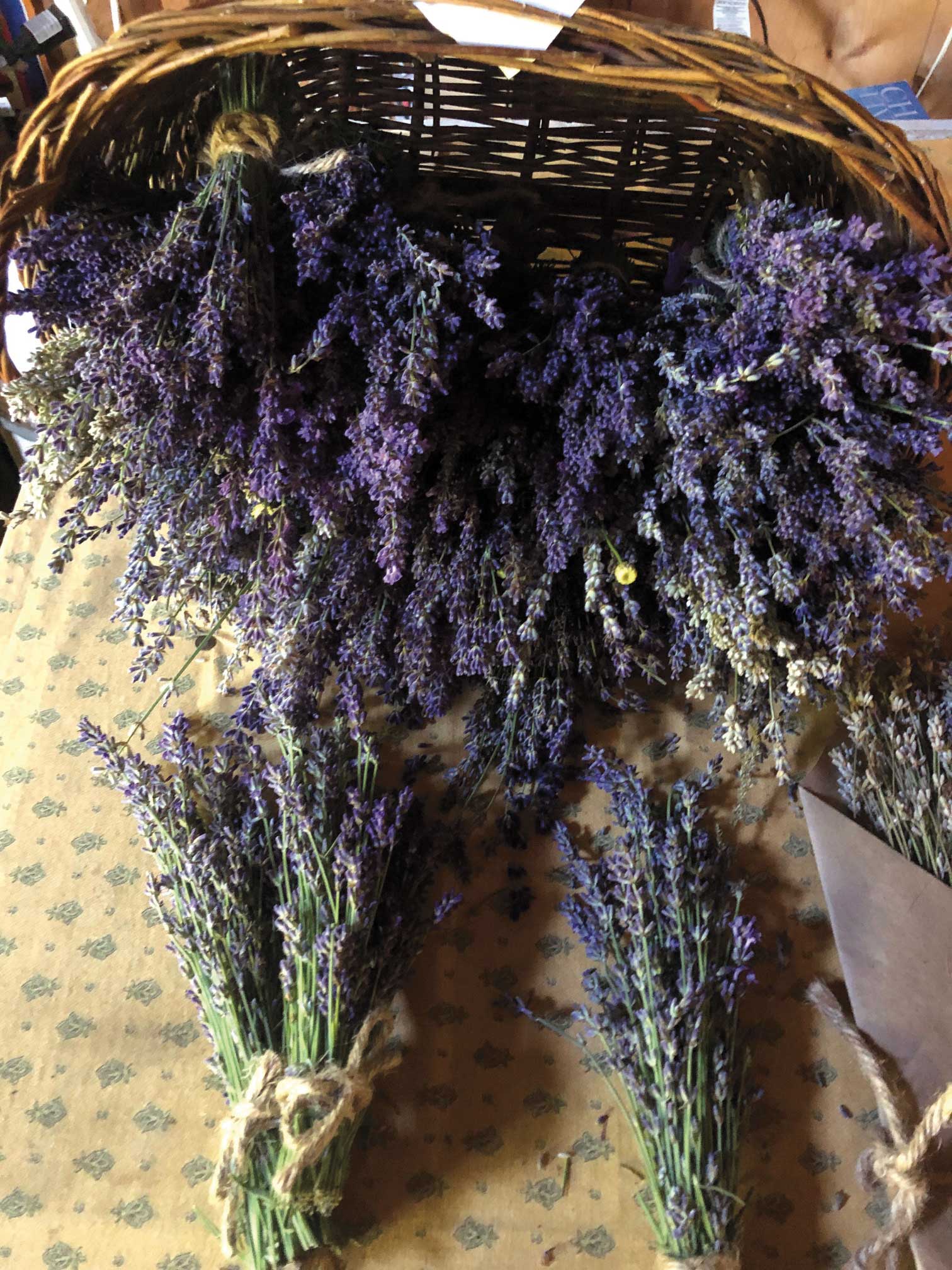
Growing Tips
From Cynthia Sutphin of Cape Cod Lavender Farm
Cape Cod Lavender Farm’s season begins in March, and the farm sells seven varieties of lavender plants, including Munstead, Hidcote, Phenomenal, Grosso, and Jean Davis (Pink). “We like to plant in the early spring because if you plant early enough, you have the benefit of the flowers that year,” says Cynthia Sutphin, owner of Cape Cod Lavender Farm. “If you plant in the fall, you will have to wait through the winter months to see flowers the following spring.”
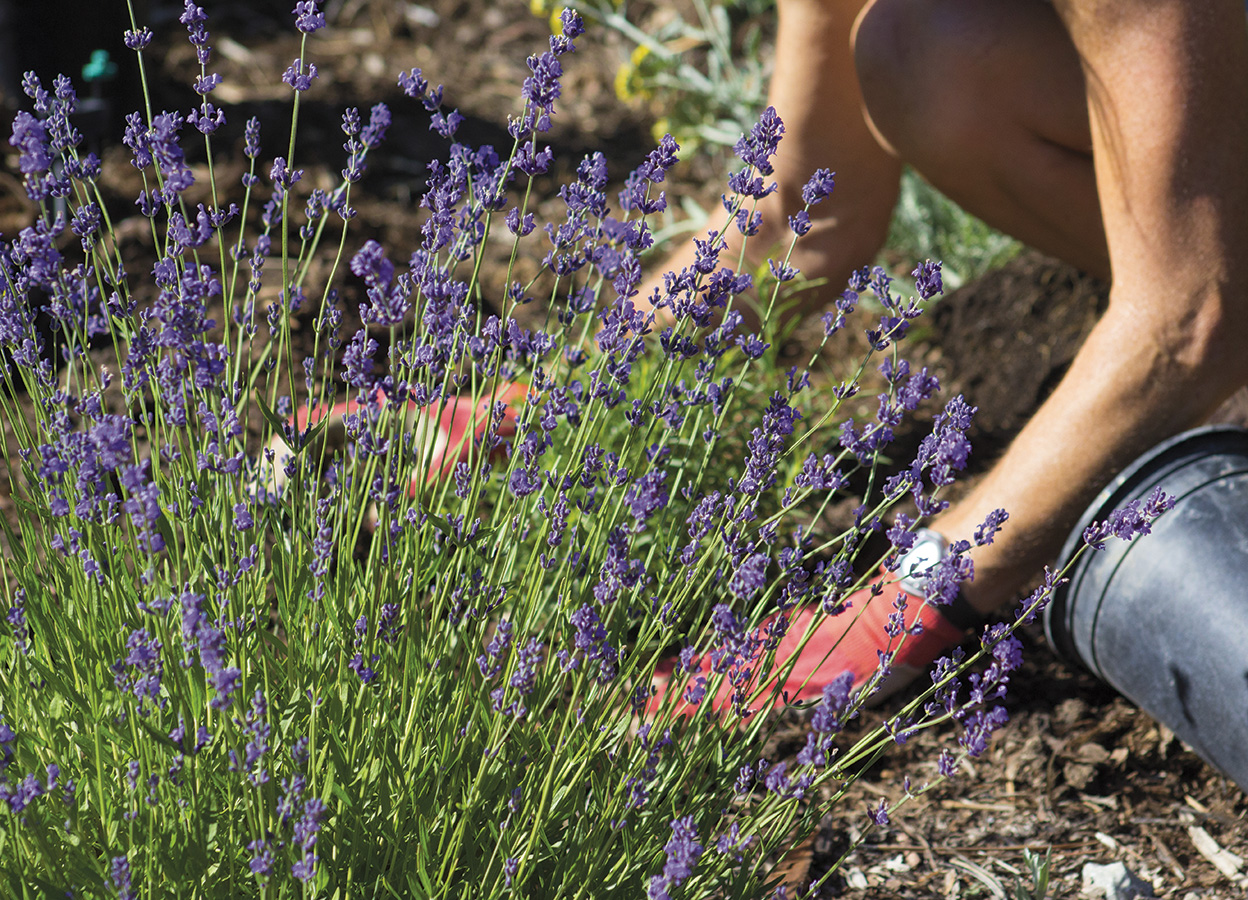
Spring and fall are the best time to plant lavender. You can still plant in the summer, as long as you water every other day for about a month.
Plant in full sun—the more sun the more flowers—with good drainage. Cape Cod soil is typically acidic, so apply a little bit of lime around the plant to keep the soil “sweet.”
Harvest in June and July. Prune in September by one-third to keep the plant looking youthful and to prevent it from getting “leggy.”
Avoid pine bark mulch because it’s too acidic. If you use other mulch, Sutphin recommends keeping it away from the roots because lavender requires well-drained soil and space to allow for air circulation. “You can also use stones or anything that reflects the heat back up onto the plant,” says Sutphin. “Lavender thrives along walkways. They like it where it’s hot.”
